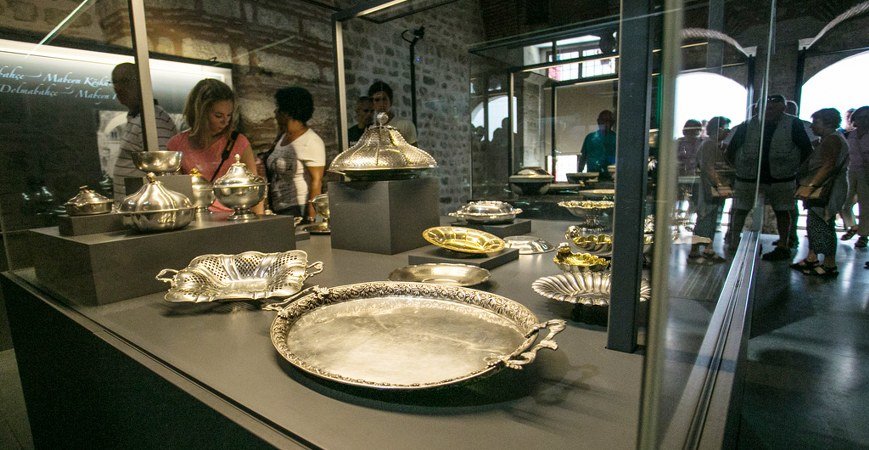
The Porcelain Section of Topkapi Palace in Istanbul – Chapter 3
The Porcelain Section of Topkapi Palace in Istanbul – Chapter 3,
Today not even the most modern porcelain factory is capable of producing a transparent and colored glaze like that, which cannot be scratched with a diamond. The masters who made these left, taking their art and skills with them.
One room of the Porcelain Section is devoted to Japanese porcelain of the 17th and 18th centuries. The other rooms contain European porcelain. most from Vienna and Sevres. This was either bought or presented as gifts by European countries. The last room is devoted to Turkish glass and ceramics. Most of these beautiful works were made in the Ceramic and Glass Factory which was established in Beykoz in 1845. During the time of the Anatolian Seljuks, the art of ceramic making reached its height, and many of the monuments built at that time had their walls decorated with ceramic mosaics. Ceramic dishes and bowls were also made during this period. During the Ottoman period with the reign. of Yavuz Sultan Selim the Iznik ceramic factories began production of wall tiles, plates, vases and dinner services which became very popular. After the 18th century, the Iznik factories began to lose their fame, and the Kutahya and Canakkale ceramics factories began to gain importance. However, these factories never managed to develop the art of ceramic making any further. After the one in Beykoz, a Ceramic Factory was opened in the Yildiz (Star) Palace in 1893 and their products were equal to those made in Europe. Besides the glass produced at the factories at Beykoz and Yildiz the Porcelain Section contains porcelain dinner services, tea and coffee cups, tombacs, vases, rosewater bottles, nightingale’s eyes (narrow liqueur bottles decorated with coloured dots and tracery), stucco pipes covered ‘with silver and gold baked in the pipe bowl kilns in Galata, and coffee sets made there.
However, all eyes are on the Chinese porcelain exhibited in the 20 chimneyed and domed former kitchens of Topkapi Palace. Visitors are left spellbound by the Seladon ware which chimes when you touch it, by the dinner services in imperial yellow, the vases of all different heights and shapes, by this porcelain which covers a thousand years. Topkapi Palace Museum is proud and delighted to have such a collection, the biggest in the world. It was such a palace that the most valuable services for use by kings and sultans were used to give dinners to 5000 people and collected the richest porcelain treasury in the world.